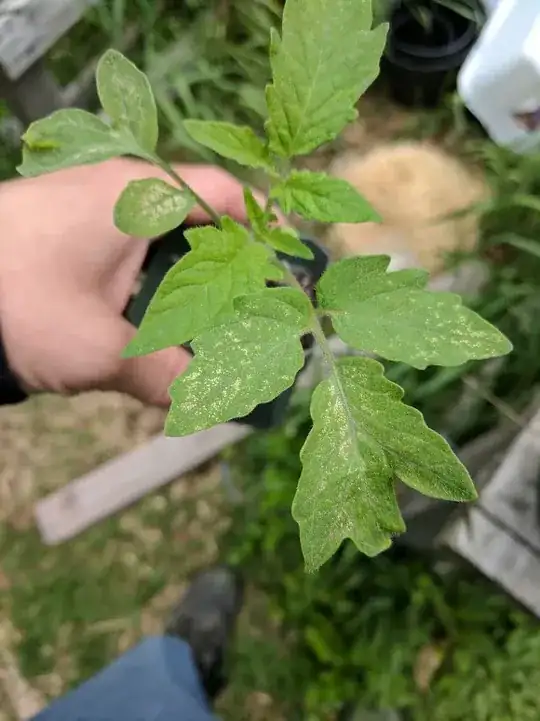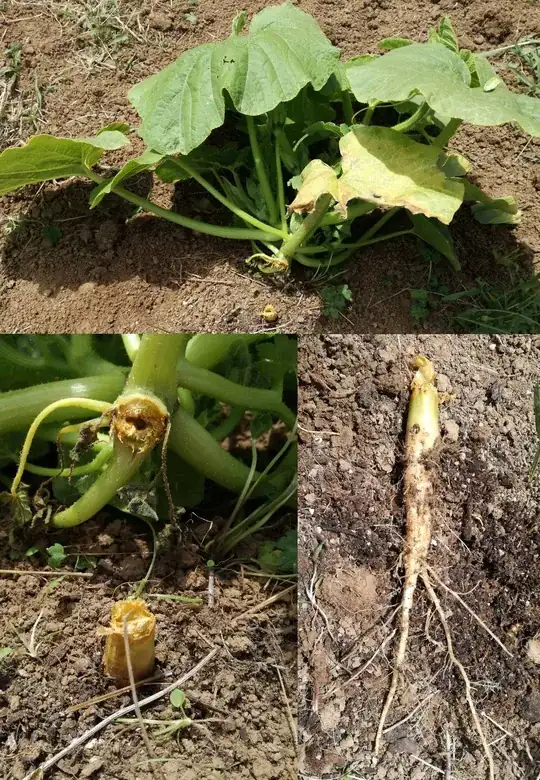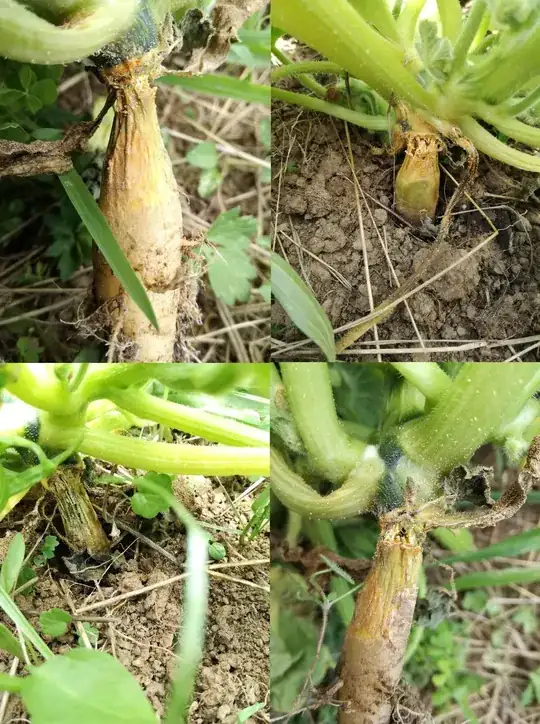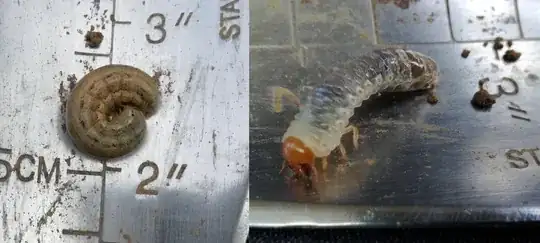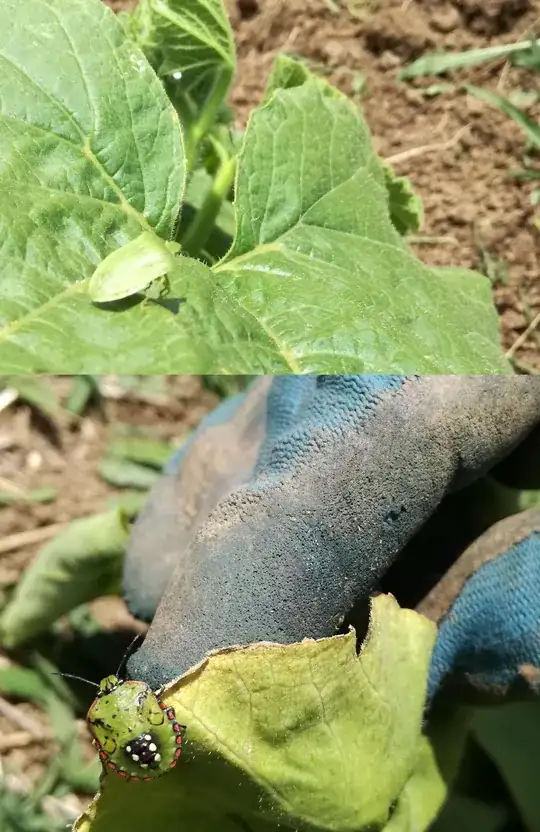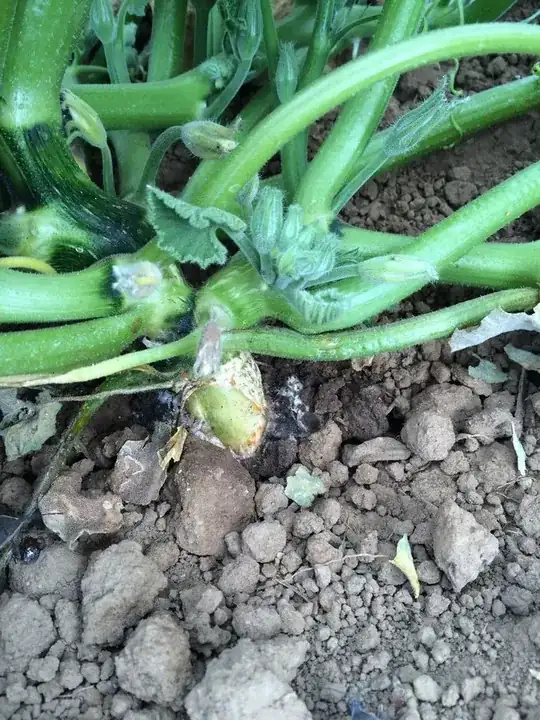Up to this date we have had a healthy crop of about 500 flowering pumpkin plants, however, over the last 3 days we have lost maybe 20 of them. They will simply wilt over 24hrs and then die:
Closer inspection shows that the base of the stem is brown/damaged and in many cases hollow - this particular plant actually appeared healthy (no wilting yet), but its stem broke very easily:
Opening up the root and stem we see no pests, larvae, etc. but similar presentation over and over:
Personally, I suspected it may have been wind damage from a recent storm, but I would expect to see more obvious damage in other areas.
Cutworms are present in the soil, but we have only ever seen them kill much smaller plants (which we now protect):
There are these guys hanging about also, but not many of them:
Finally, internet searches lead us to fungal crown rot, but that seems odd in that the field in question has been used for cattle grazing for years before this happened. We thought we'd ask here so as not to rule out anything else, and if it is crown rot or otherwise:
- What if anything, can we do to fix this now, this year?
Organic solutions are preferred.
